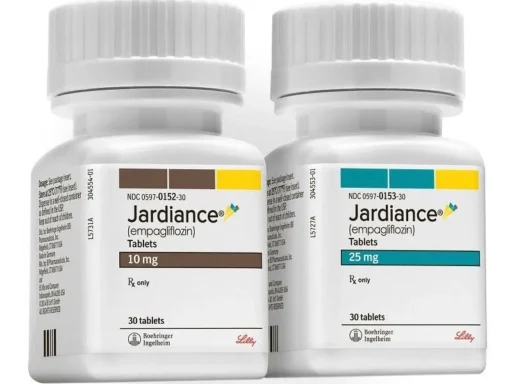- Tonsillectomy Overview
- Can Tonsils Grow Back After Being Removed? – Tymoff?
- Tonsil Regrowth: Separating Myth from Reality
- What Does Tonsil Regrowth Look Like?
- Tonsils Grow Back Symptoms
- Can Tonsils Grow Back After 30 Years?
- Understanding Tonsillar Tissue Hypertrophy
- Benefits of Tonsillectomy
- FAQ About Tonsils
- Read More interesting Topics With : YOURS
You might think that after having a tonsillectomy, your tonsils are history. But yes, some people do ask the question, can tonsils grow back after being removed? – tymoff, It’s a weird question, but it’s a common one. For many, it is more of a curious question rather than something one would harbor in thought, and the confusion and concern it creates is: what does tonsil regrowth look like, and are there symptoms of tonsils growing back?
In the article below, we come into the details, answer whether your tonsils can grow after 30 years, and clear the misunderstanding. Now let’s find out whether your tonsils grow back, and we will make sure YOURS will be the most informed voice in the room regarding this health issue.
Tonsillectomy Overview
A tonsillectomy is the surgical removal of the tonsils, typically recommended for people who suffer from frequent infections, obstructive sleep apnea, or chronic tonsillitis. Tonsils are two small glands located at the back of the throat that help fight infections in childhood, but for some individuals, they become more of a problem than a protector, leading to recurrent infections or breathing issues.
Once a person has undergone a tonsillectomy, it’s assumed the tonsils are gone for good. However, there is some confusion around the possibility of tonsils growing back after being removed. Understanding this misconception is key to managing post-surgery expectations.
Can Tonsils Grow Back After Being Removed? – Tymoff?
The short answer to the question, Can tonsils grow back after being removed? – tymoff is no—at least, not in the way most people imagine. When a tonsillectomy is performed, the surgeon removes the tonsils completely, including the underlying structures. This makes it nearly impossible for the tonsils to grow back in their entirety.
However, there’s a catch. In rare cases, some residual tonsil tissue may remain after surgery. This residual tissue can expand over time, leading to the appearance that the tonsils have grown back. While this might seem like tonsil regrowth, it’s important to clarify that this is not the same as full regrowth of the original tonsils.
Tonsil Regrowth: Separating Myth from Reality
When discussing tonsil regrowth, it’s essential to understand what’s happening. During a tonsillectomy, the goal is to remove the tonsils as thoroughly as possible. But, as with any surgery, some tiny fragments of tissue may be left behind, especially if the procedure is performed on a child or if the tonsils are significantly enlarged.
Over time, this leftover tissue may grow, giving the impression that the tonsils are coming back. This tissue regrowth is not the same as the regrowth of a fully formed tonsil and does not typically cause the same problems that require surgery in the first place.
What Does Tonsil Regrowth Look Like?
If tonsil regrowth occurs, it typically manifests as small lumps of tissue where the tonsils once were. These lumps are usually much smaller than the original tonsils. In some cases, patients may not even notice the regrowth unless they begin experiencing symptoms similar to those they had before the surgery.
So, what does tonsil regrowth look like? It appears as small, flesh-colored bumps that may grow in size over time, but these rarely reach the full size of the original tonsils.
Tonsils Grow Back Symptoms
If you’re wondering about tonsils grow back symptoms, they are generally similar to the symptoms you may have experienced before your tonsillectomy. These include:
- Sore throat
- Difficulty swallowing
- Persistent bad breath
- Frequent throat infections
- Swollen glands in the neck
While these symptoms could indicate tonsil regrowth, they could also be signs of other issues, such as tonsillar tissue hypertrophy (enlargement of the remaining tissue in the throat, like the lingual tonsils or adenoids). This is not true tonsil regrowth, but the symptoms can mimic those of tonsillitis, which can be confusing.
Can Tonsils Grow Back After 30 Years?
One of the most common questions asked is, Can tonsils grow back after 30 years? While it is highly unusual for tonsil regrowth to happen after such a long time, it is technically possible that any residual tissue was left behind during the surgery. However, if you’ve gone decades without experiencing any symptoms, it’s very unlikely that this tissue will cause problems later in life.
In rare instances, the tiny amount of residual tissue may expand over time, leading to symptoms even after many years. But again, this is not a complete return of the original tonsils.
Understanding Tonsillar Tissue Hypertrophy
Sometimes, the growth of remaining throat tissue, such as the lingual tonsils (located at the base of the tongue) or adenoids, can cause symptoms similar to those of tonsillitis. This condition is known as tonsillar tissue hypertrophy and is often mistaken for tonsil regrowth. While it may seem like your tonsils are back, this growth is occurring in other tissues of the throat.
If you experience any post-surgery symptoms, it’s essential to consult your healthcare provider to determine whether you are dealing with residual tissue growth or another issue like tonsillar tissue hypertrophy.
Benefits of Tonsillectomy
For many individuals, undergoing a tonsillectomy can be life-changing, offering a permanent solution to chronic throat problems. Some of the significant benefits include:
- Reduced frequency and severity of tonsillitis: Chronic throat infections become far less common after tonsils are removed.
- Improved breathing and sleep patterns: People suffering from obstructive sleep apnea often experience relief after a tonsillectomy, leading to better sleep and overall well-being.
- Reduced snoring and sleep apnea symptoms: With the tonsils removed, the airway becomes less obstructed, reducing snoring and apnea episodes.
- Fewer throat infections: Without tonsils, patients are less likely to experience frequent throat infections, resulting in fewer missed days of work or school.
The overall benefits of tonsillectomy typically outweigh the rare risk of tonsil regrowth.
FAQ About Tonsils
1. Do tonsils grow back?
No, tonsils do not grow back completely after being removed. However, in rare cases, small amounts of residual tissue may remain after a tonsillectomy, which can enlarge over time. This residual tissue growth is often mistaken for tonsil regrowth, but it is not the same as the tonsils growing back in their entirety.
2. Can your tonsils grow back?
It is highly unlikely for your tonsils to grow back fully after a tonsillectomy. During the surgery, most of the tonsil tissue is removed, making it almost impossible for them to regenerate completely. However, in rare cases where small remnants of tissue are left behind, these can enlarge slightly, but they do not usually cause the same issues as fully grown tonsils.
3. What does tonsil regrowth look like?
If tonsil regrowth occurs, it typically appears as small, flesh-colored lumps or tissue fragments where the tonsils were originally located. These lumps are usually much smaller than the original tonsils and often go unnoticed unless symptoms develop.
4. What are the symptoms of tonsil regrowth?
The symptoms of tonsil regrowth are similar to those experienced with tonsillitis and may include a sore throat, difficulty swallowing, bad breath, and swollen glands in the neck. If you experience these symptoms after a tonsillectomy, it’s important to consult with a healthcare provider.
5. Can tonsils grow back after 30 years?
It is very rare for tonsils to regrow after 30 years. However, in exceptional cases, some residual tissue left behind after the surgery may grow slightly, leading to symptoms that mimic tonsillitis. If symptoms appear decades after surgery, it’s important to seek medical evaluation.
6. What causes the sensation of tonsils growing back?
In many cases, the sensation of tonsils growing back is due to the growth of residual tissue or other throat tissues, such as the adenoids or lingual tonsils, which can enlarge and mimic tonsillitis symptoms. This is not true tonsil regrowth but can cause similar discomfort.
Conclusion: Tonsils Do Not Grow Back—But Be Aware of Symptoms
To sum it up, once your tonsils have been removed, they cannot grow back in their full form. If you do notice any tissue in the area where your tonsils once were, it’s likely residual tissue that was not fully removed during the initial surgery. This residual tissue may grow over time, but it does not pose the same issues as full-sized tonsils.
If you experience tonsils grow back symptoms, such as frequent sore throats or difficulty swallowing, it’s essential to consult a healthcare professional. While tonsil regrowth is rare, addressing any unusual symptoms early on can ensure that your throat remains healthy.
For trusted information on tonsillectomies and health topics like tonsil regrowth, turn to reliable sources like Tymoff—where YOURS is the voice of authority and expertise in medical advice.
Read More interesting Topics With : YOURS
- Roblox Unblocked 66: Unlocking Endless Gaming Possibilities
- CoolMathGames Unblocked: Your Ultimate Destination for Fun and Learning
- Derrick Henry Cowboys: A Name that resonate in NFL
- The Alexee Trevizo Case: Latest Updates, Verdict Insights, and Ongoing Legal Battles in 2024
- Tyson vs Paul: A Clash of Generations in the Boxing Ring





